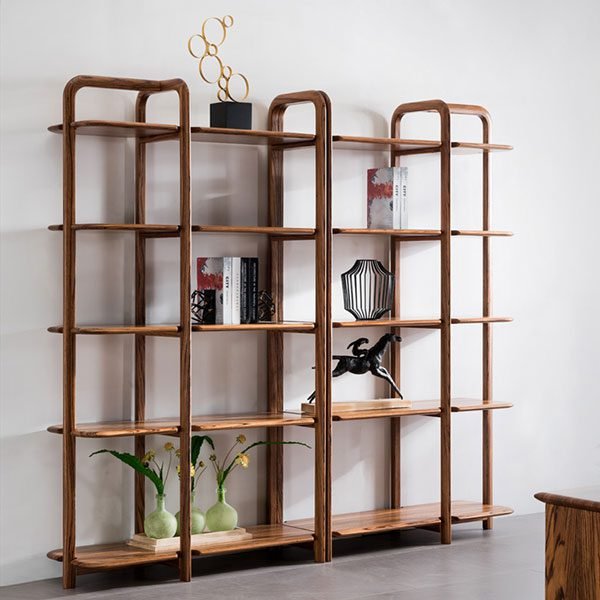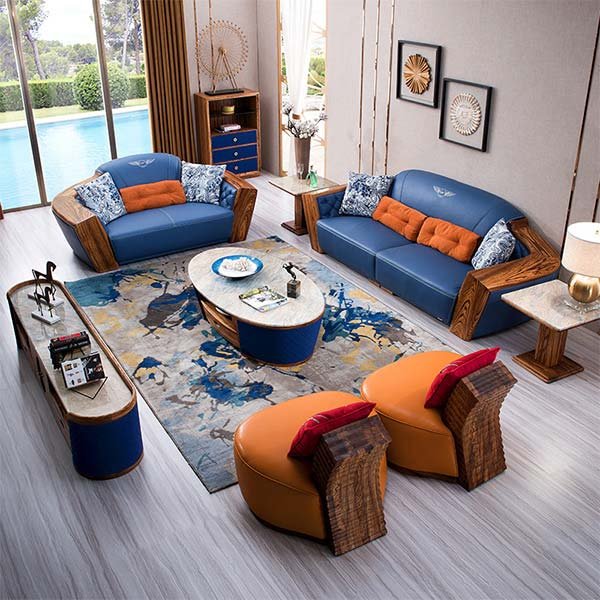“Unlock your creativity, master the art of drawing furniture.”
Essential Tools for Drawing Furniture
Essential Tools for Drawing Furniture
When it comes to drawing furniture, having the right tools is essential. Whether you are a professional designer or simply enjoy sketching furniture as a hobby, having the proper tools can make a significant difference in the quality of your drawings. In this article, we will explore some of the essential tools that every furniture artist should have in their arsenal.
First and foremost, a good set of pencils is a must-have for any artist. When it comes to drawing furniture, you will need a range of pencils with different hardness levels. Harder pencils, such as 2H or 4H, are ideal for sketching the initial outlines and details of the furniture. Softer pencils, like 2B or 4B, are perfect for shading and adding depth to your drawings. Having a variety of pencils will allow you to achieve different effects and textures in your furniture sketches.
Next, a quality eraser is essential for any artist. Mistakes happen, and being able to erase them without damaging the paper is crucial. Look for a soft eraser that can easily remove pencil marks without leaving smudges or tearing the paper. A kneaded eraser is an excellent choice as it can be shaped to fit into tight corners and is gentle on the paper.
In addition to pencils and erasers, having a good set of drawing pens is also important. Pens with different tip sizes, such as fine, medium, and bold, will allow you to add precise details and lines to your furniture drawings. Experiment with different pen types, such as ballpoint or felt-tip, to find the one that suits your style best.
Another essential tool for drawing furniture is a ruler or straightedge. These tools will help you create straight lines and accurate measurements in your sketches. A transparent ruler is particularly useful as it allows you to see the lines underneath, making it easier to align and draw precise shapes.
To add depth and dimension to your furniture drawings, consider investing in a set of markers or colored pencils. These tools will allow you to add color and shading to your sketches, bringing your furniture designs to life. Experiment with different color combinations and shading techniques to create realistic and visually appealing drawings.
Lastly, having a sketchbook or drawing pad dedicated to your furniture drawings is essential. This will allow you to keep all your sketches organized and easily accessible. Choose a sketchbook with thick, high-quality paper that can withstand erasing and shading without smudging or tearing.
In conclusion, having the right tools is crucial for drawing furniture. A good set of pencils, erasers, drawing pens, rulers, markers or colored pencils, and a dedicated sketchbook are all essential for creating high-quality furniture sketches. Experiment with different tools and techniques to find the ones that work best for you. With practice and the right tools, you will be able to create stunning furniture drawings that showcase your artistic talent.
Step-by-Step Guide to Drawing Different Types of Furniture
Step-by-Step Guide to Drawing Different Types of Furniture
Drawing furniture can be a fun and rewarding activity for both beginners and experienced artists. Whether you want to create a realistic representation or a more stylized version, this step-by-step guide will help you bring different types of furniture to life on paper. So grab your pencils and let’s get started!
1. Start with the basic shapes: Begin by sketching the basic shapes of the furniture piece you want to draw. For example, if you’re drawing a chair, start with a rectangle for the seat and two lines for the backrest. Use light, loose lines to establish the overall proportions.
2. Add details and refine the shapes: Once you have the basic shapes in place, start adding details to make the furniture piece more recognizable. Pay attention to the curves, angles, and proportions. Use straight lines for edges and curves for rounded parts. Refine the shapes as you go, erasing any unnecessary lines.
3. Focus on the textures: Furniture often has different textures, such as wood grain or upholstery. To create a realistic look, pay attention to these details. Use short, parallel lines to represent wood grain or crosshatching for fabric textures. Experiment with different shading techniques to achieve the desired effect.
4. Don’t forget about perspective: When drawing furniture, it’s important to consider perspective. Determine the vanishing point and use it as a guide to create depth and dimension. For example, if you’re drawing a table, the lines of the tabletop should converge towards the vanishing point.
5. Add shadows and highlights: Shadows and highlights can add depth and dimension to your drawing. Observe the light source and imagine where the shadows would fall. Use darker tones or crosshatching to create shadows, and leave some areas lighter to represent highlights. This will make your furniture piece look more three-dimensional.
6. Pay attention to the details: The details are what make a drawing truly stand out. Take your time to add small details like buttons on a sofa or intricate carvings on a table. These details will make your furniture piece more realistic and visually interesting.
7. Experiment with different styles: While drawing realistically is a great skill to have, don’t be afraid to experiment with different styles. Try drawing furniture in a more abstract or stylized way. Play with shapes, colors, and patterns to create unique and eye-catching designs.
8. Practice, practice, practice: Like any skill, drawing furniture takes practice. Don’t get discouraged if your first attempts don’t turn out as expected. Keep practicing and experimenting with different techniques. Over time, you’ll improve and develop your own style.
In conclusion, drawing furniture can be a rewarding and enjoyable activity. By following this step-by-step guide, you can learn how to draw different types of furniture with ease. Remember to start with basic shapes, add details and textures, consider perspective, and pay attention to shadows and highlights. Don’t be afraid to experiment with different styles and, most importantly, practice regularly. So grab your sketchbook and start bringing furniture to life on paper!
Tips and Techniques for Adding Realistic Details to Furniture Drawings
Drawing furniture can be a challenging task, especially when it comes to adding realistic details. However, with the right tips and techniques, you can elevate your furniture drawings to a whole new level. In this article, we will explore some useful tips and techniques that will help you add realistic details to your furniture drawings.
One of the first things to consider when drawing furniture is the perspective. Understanding the perspective is crucial for creating realistic drawings. Start by determining the vanishing points and horizon line. This will help you establish the correct proportions and angles of the furniture. Use a ruler or a straight edge to draw straight lines and maintain accuracy in your drawings.
Once you have established the perspective, it’s time to focus on the details. Pay attention to the different elements of the furniture, such as the legs, arms, and backrests. Study the shape and structure of each element and try to replicate it in your drawing. Use light and shadow to create depth and dimension in your drawings. This will make your furniture look more realistic and three-dimensional.
Another important aspect to consider is the texture of the furniture. Different materials have different textures, and it’s important to capture these textures in your drawings. For example, if you are drawing a wooden chair, pay attention to the grain and texture of the wood. Use cross-hatching or stippling techniques to create the illusion of texture in your drawings. Experiment with different shading techniques to achieve the desired effect.
Adding details such as buttons, stitching, or patterns can also enhance the realism of your furniture drawings. Pay attention to the small details that make each piece of furniture unique. Use a fine-tipped pen or pencil to add these details to your drawings. Take your time and be patient, as adding these details can be time-consuming but rewarding.
When drawing furniture, it’s important to consider the overall composition of your drawing. Think about how the furniture fits into the space and how it interacts with other elements in the scene. Pay attention to the proportions and scale of the furniture in relation to the other objects in the drawing. This will help create a sense of harmony and balance in your artwork.
Lastly, practice is key when it comes to improving your furniture drawing skills. The more you practice, the better you will become. Take the time to study different furniture designs and styles. Observe how light interacts with different materials and textures. Experiment with different drawing techniques and materials. Don’t be afraid to make mistakes, as they are an essential part of the learning process.
In conclusion, drawing furniture with realistic details requires a combination of technical skills and artistic sensibility. By understanding perspective, paying attention to details, and practicing regularly, you can improve your furniture drawing skills and create stunning and realistic artwork. So grab your pencils and start drawing!
Заключение
Заключение о том, как рисовать мебель:
1. Начните с изучения различных типов мебели и их основных элементов. Изучите формы, пропорции и детали каждого предмета.
2. Практикуйтесь в рисовании базовых геометрических форм, таких как кубы, цилиндры и прямоугольники. Это поможет вам понять объем и перспективу мебели.
3. Используйте линейные и тоновые штрихи, чтобы передать текстуру и детали мебели. Обратите внимание на тени и свет, чтобы создать объем и глубину.
4. Не забывайте о масштабе и пропорциях. Убедитесь, что размеры мебели соответствуют остальным элементам вашего рисунка.
5. Экспериментируйте с различными материалами и стилями. Попробуйте нарисовать мебель в разных ракурсах и с разными декоративными элементами.
6. Не бойтесь делать ошибки и учиться на них. Постепенно вы будете улучшать свои навыки и развивать свой собственный стиль рисования мебели.
В целом, рисование мебели требует практики, терпения и внимания к деталям. Следуя этим рекомендациям, вы сможете создавать реалистичные и привлекательные изображения мебели.



